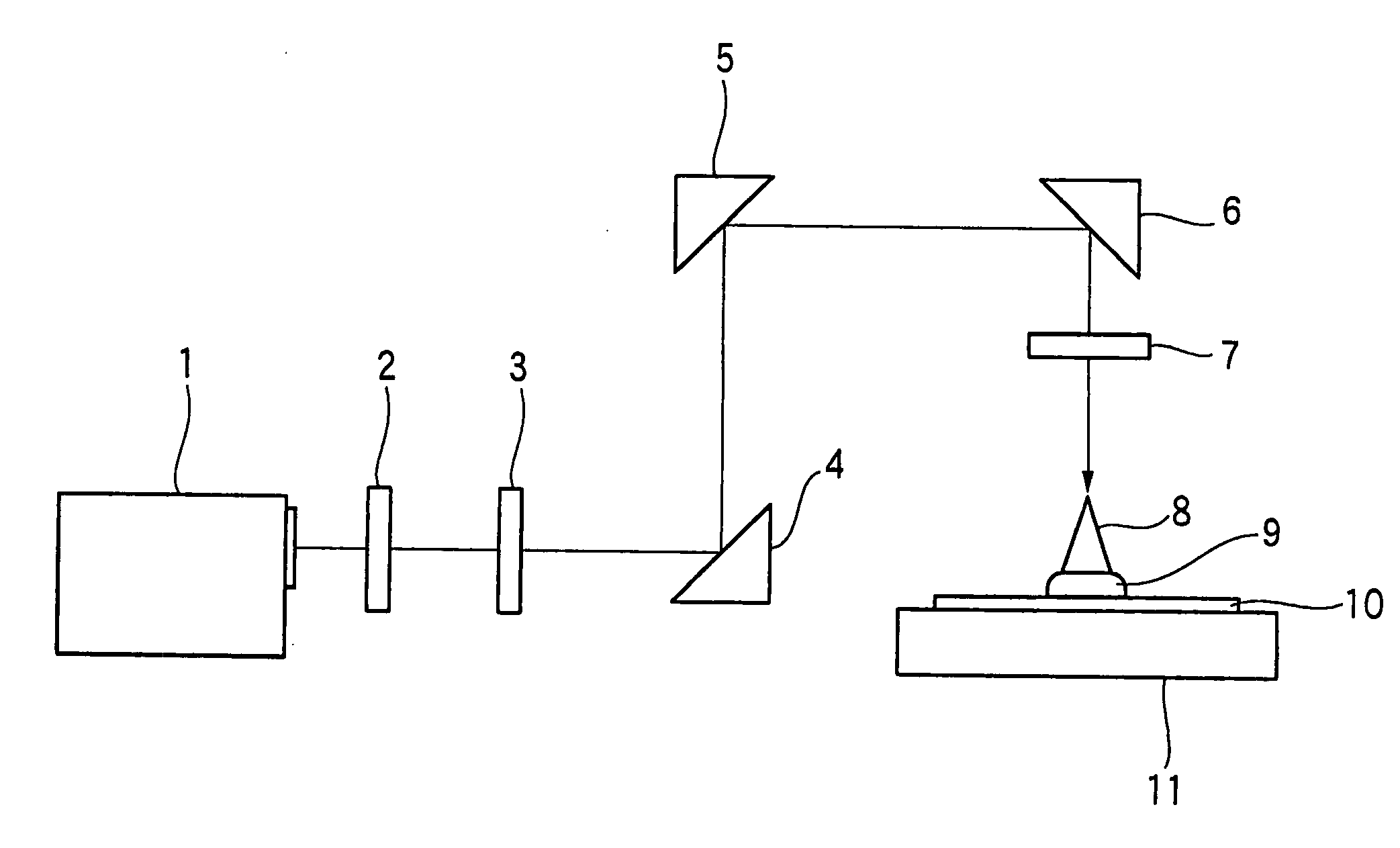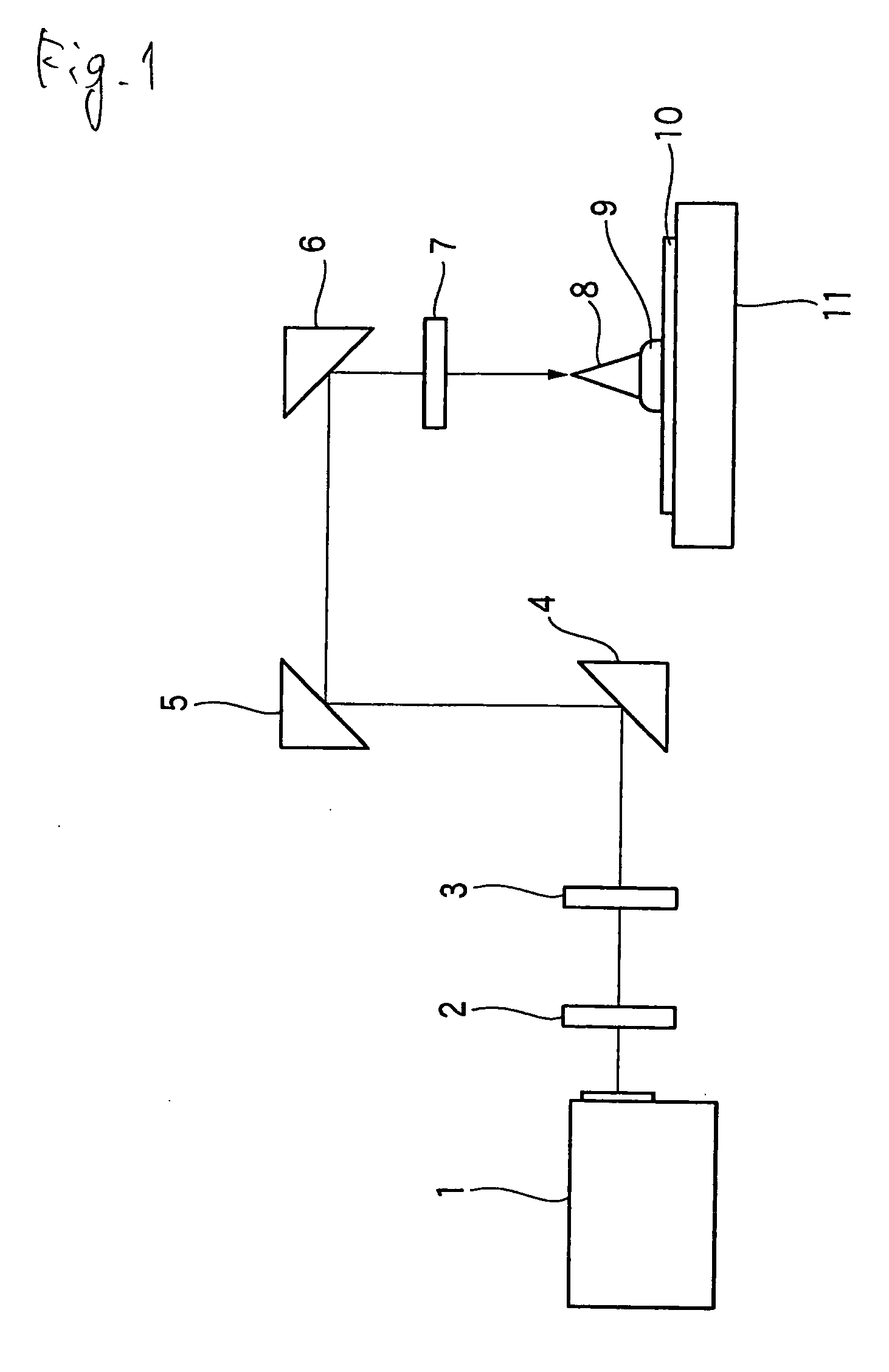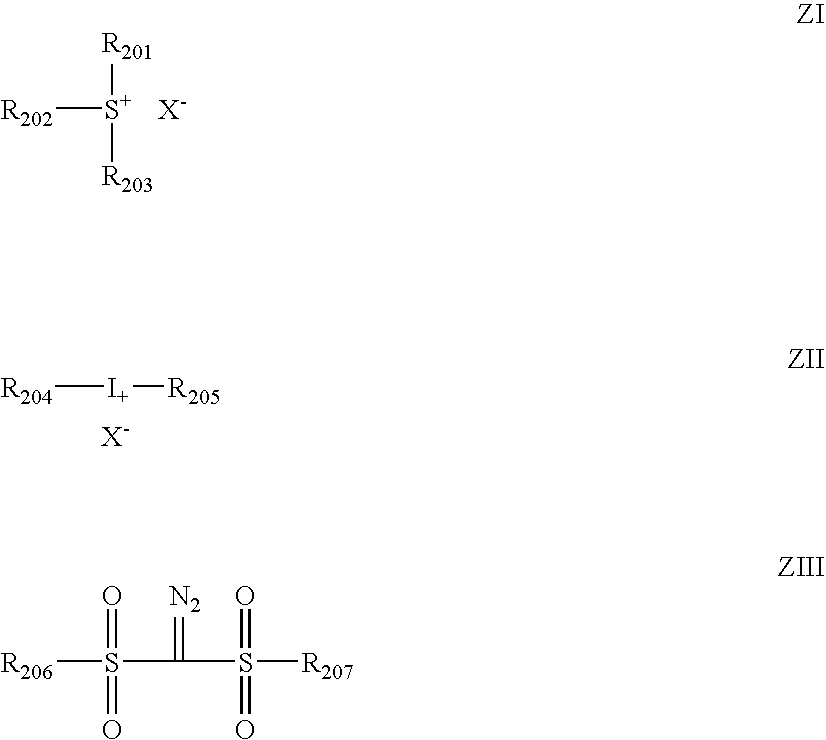Positive photosensitive composition and pattern-forming method using the same
a technology of composition and pattern, applied in the direction of photosensitive materials, instruments, photomechanical treatment, etc., can solve the problems of difficult compatibility of peb temperature dependency and widening of exposure latitude, insufficient chemically amplified photosensitive compositions, and insufficient compounds, so as to improve peb temperature dependency and exposure latitude, the effect of positive photosensitivity
- Summary
- Abstract
- Description
- Claims
- Application Information
AI Technical Summary
Benefits of technology
Problems solved by technology
Method used
Image
Examples
synthesis example 1
Synthesis of Monomer (A)
[0296] Hydroxydiamantane (9.8 g), 3.7 g of methacrylic anhydride, and 0.5 g of concentrated sulfuric acid were dissolved in 150 ml of toluene, and the resulting solution was allowed to react under reflux for 2 hours. The reaction solution was washed with a sodium bicarbonate aqueous solution, subsequently with distilled water, dried over sodium sulfate anhydride, and concentrated, whereby a crude product was obtained. The crude product was refined by column chromatography to obtain 6.3 g of Monomer (A).
synthesis example 2
Synthesis of Monomer (B)
[0297] Bromine (160 ml) was cooled to −7° C., and 40 g of diamantane was gradually added thereto while maintaining the temperature of the reaction solution −3° C. or lower. After that, 2.16 g of aluminum bromide was gradually added while maintaining the temperature of the reaction solution 0° C. or lower. The reaction solution was stirred at −7° C. for 30 minutes, and then slowly poured into a solution comprising 500 g of sodium sulfite, 160 g of sodium hydroxide, and 3 liters of water. The precipitate was filtered out and washed with acetonitrile, whereby 63 g of dibromodiamantane was obtained.
[0298] To 20 g of the dibromodiamantane was slowly added 80 ml of concentrated nitric acid, the solution was heated at 70° C. and allowed to react for 30 minutes. The reaction solution was poured into 300 ml of water, and 72 g of sodium hydroxide and 500 ml of water were added thereto to make the solution alkaline. The precipitate was filtered out and washed with wat...
synthesis example 3
Synthesis of Resin (RA-1) (Dropping Polymerization)
[0300] Propylene glycol monomethyl ether acetate (5.1 g) and 3.4 g of propylene glycol monomethyl ether were put into a three neck flask under nitrogen current and heated at 80° C. Thereto was dropped over 6 hours a solution comprising 46 g of propylene glycol monomethyl ether acetate and 30.7 g of propylene glycol monomethyl ether having dissolved therein 2.7 g of Monomer (A), 4.7 g of 3-hydroxyadamantane acrylate, 7.0 g of 2-methyl-2-adamantyl methacrylate, 6.8 g of γ-butyrolactone, and a polymerization initiator V-601 (manufactured by Wako Pure Chemical Industries) in proportion of 4 mol % based on the polymer. After finishing dropping, the reaction solution was further reacted at 80° C. for 2 hours. After being allowed to cool, the reaction solution was poured into 720 ml of hexane and 80 ml of ethyl acetate, and the precipitated powder was filtered out and dried to thereby obtain 17 g of Resin (RA-1). The weight average molecu...
PUM
| Property | Measurement | Unit |
|---|---|---|
| temperature | aaaaa | aaaaa |
| temperature | aaaaa | aaaaa |
| temperature | aaaaa | aaaaa |
Abstract
Description
Claims
Application Information
 Login to View More
Login to View More - R&D
- Intellectual Property
- Life Sciences
- Materials
- Tech Scout
- Unparalleled Data Quality
- Higher Quality Content
- 60% Fewer Hallucinations
Browse by: Latest US Patents, China's latest patents, Technical Efficacy Thesaurus, Application Domain, Technology Topic, Popular Technical Reports.
© 2025 PatSnap. All rights reserved.Legal|Privacy policy|Modern Slavery Act Transparency Statement|Sitemap|About US| Contact US: help@patsnap.com



